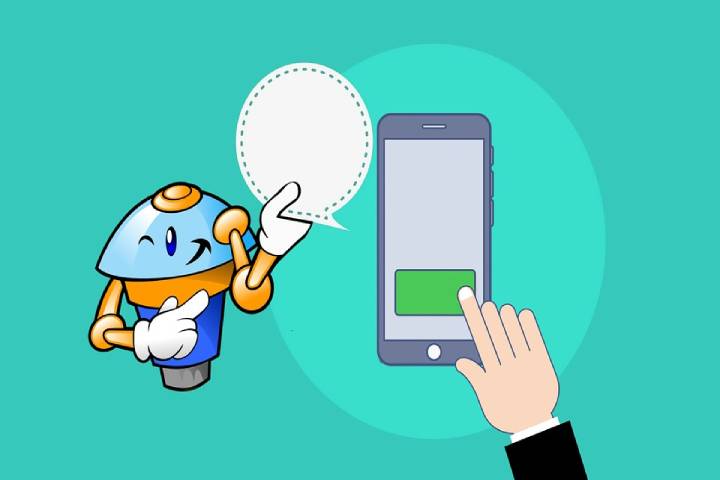With students across the world returning to in-person learning, some of whom have been out of the classroom for more than a year, teachers are scrambling to prepare for the transition back to traditional education.
In addition, new techniques and strategies must be implemented to keep young learners engaged for students who now associate learning as something done solely in a virtual environment.
Fortunately, stunning advancements in AI for education are helping students become better learners in several ways, all while putting less responsibility and work in the hands of already overworked teachers.
In particular, AI enthusiasts and experts are already predicting a future where AI-based chatbots will take an even more significant role in education, becoming in-classroom tutors and providing individualized assistance for learners of all levels.
While that technology may not still be available for such advanced applications, the current usage of AI in classrooms and by educators across the globe are already reframing what the future of teaching will look like.
1. Increased Efficiencies
Many teachers and educators are bogged down with the repetitive administrative tasks required to run a classroom. While these tasks remain necessary, employing the help of powerful artificial intelligence software frees up workloads to allow educators to focus their time and energy on students better.
Software developers continue to produce solutions for grading, not just multiple-choice assessments but also written work such as short answer responses and even essays. Experts expect that eventually, AI will also assess more complicated assignments, such as oral examinations.
2. Individualized Education
Educators at all levels work tirelessly to meet students by providing individualized education and lessons to ensure maximal success for all students.
There are already a number of AI companies working to supply teachers with artificial intelligence tools capable of testing students and assessing their areas of strength or weakness, and pairing these with particular resources to promote long-term success.
As this technology continues to develop, there is potential for AI to utilize facial recognition technology to assess students’ micro and macro expressions to understand better where, why, and in what ways they are struggling.
3. Greater Accessibility and Flexibility
For students who converse a different language or experience visual or auditory impairments, AI in the classroom can be an effective tool to minimize these differences.
AI additions such as automatic captioning or live translation can convert teachers’ speech to text in almost real-time, helping these students stay present and up to date with their classmates.
Not only does this aid their education, but these tools also help prevent feelings of isolation for students who have traditionally been undersupported in classrooms.
4. Outside Classroom Support
Some students require additional support outside the classroom to be successful, but in-person tutoring is expensive and frequently not an option for some students for various reasons.
However, with the addition of AI systems to serve as tutors, students are empowered to receive personalized tutoring support whenever they need it without asking for help in front of peers.
Ultimately, the potential for AI in the world of education is vast. As natural language processing technology and machine learning continue to improve in the coming years, these tools will continue to prove their value for students and teachers alike.
Tech Trends
Related posts
Leave a Reply Cancel reply
Hot Topics
Categories
- Ads (5)
- Animes (25)
- Artificial Intelligence (AI) (35)
- Augmented Reality (AR) (10)
- Automotive (9)
- Bitcoin (16)
- Blockchain (24)
- Business (244)
- Business Intelligence (3)
- Cloud Computing (23)
- Computer (128)
- Concrete Technology (1)
- Cryptocurrency (10)
- Cybersecurity (42)
- Data Science (9)
- Database (4)
- DevOps (6)
- Digital Marketing (76)
- Digital Workplace (14)
- Ecommerce (1)
- Education (28)
- Electric Vehicle (EV) (1)
- Electronics & Hardware (17)
- Entertainment (42)
- Fabrication (3)
- FAQ's (1)
- Finance & Marketing (47)
- Gadgets (35)
- Games (8)
- Gear (29)
- HTTPS (1)
- Industry (46)
- Information Technology (90)
- Internet (413)
- Internet of Things (IoT) (41)
- Job (25)
- Machine Learning (6)
- Marketing (92)
- Mobile Apps (21)
- Movies (11)
- Natural Language Processing (6)
- News & Trends (109)
- Programming (4)
- Science & Technology (235)
- Security (81)
- SEO (56)
- Services (36)
- Social Media (73)
- Software (99)
- Sports (1)
- Technology (306)
- Telecom (6)
- TikTok (5)
- Tours & Travels (9)
- Uncategorized (11)
- Virtual Reality (VR) (7)
- VoIP (4)
- Web Technology (42)
- Workforce (17)
- Workspace (6)



Stay connected